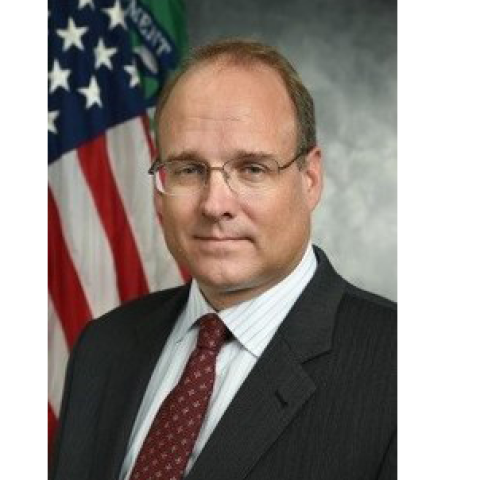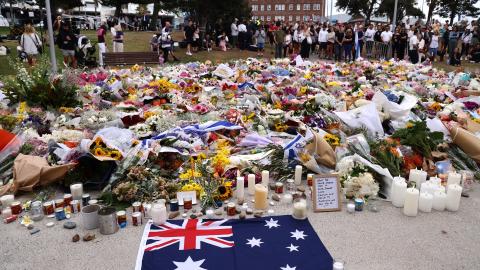We have previously examined and written about S.4207, the Spectrum and National Security Act,1 including the challenges associated with borrowing authority for the Federal Communications Commission (“FCC” or “the Commission”).2 We write today to estimate the potential federal receipts from spectrum auctions that would occur if the auction-extension provisions of the bill were signed into law.3
S.4207 would grant the FCC borrowing authority in excess of $20 billion, to be paid back by the Commission through proceeds from spectrum auctions under authority granted for five years—authority the Commission does not currently possess. However, the bill does not specify which, if any, spectrum bands the FCC shall auction during this time.4 Therefore, any estimate of the potential proceeds from spectrum auctions enabled by this bill must consider which spectrum bands are likely to be auctioned during the bill’s five-year window, along with an analysis of the economic value of the spectrum itself.
Based on current FCC inventory of spectrum, there is one auction that would likely take place once FCC has the authority: for returned AWS-3 licenses currently in the FCC’s inventory. For the reasons discussed below, we estimate that the AWS-3 licenses auction would likely generate federal receipts of between $3 billion and $4.5 billion.
In the introduced version of S.4207, there was language instructing the auction of the Upper 12 GHz band (12.7-13.25 GHz). This language was removed—potentially reflecting the political challenges with an auction—making it less certain this auction will occur in next five years. If it were to be auctioned in the next five years, we find the likely range of auction receipts for a mobile service in the Upper 12 GHz band to be from $3.66 billion - $9.15 billion, with a greater likelihood at the lower end of that range given current uncertainty about future FCC rules. We find the likely range of auction receipts for a fixed service in the Upper 12 GHz band to be from $1.83 billion - $4.57 billion, with a greater likelihood at the lower end of that range given current uncertainty about future FCC rules. Generally, we find the allocation of the Upper 12 GHz more likely to resemble the fixed allocation of the Lower 12 GHz rather than mobile.
Between 1995 and 2020, the FCC routinely maintained a substantial number of spectrum bands under consideration for auction. Under those circumstances, it would have been reasonable to assume that a grant of general auction authority to the FCC would lead to several new auctions. Between 1995 and 2020, the FCC conducted more than 100 spectrum auctions.5
Today’s auction pipeline is entirely different. Other than the AWS-3 licenses—or with less likelihood, the Upper 12 GHz band—the FCC has no valuable bands of spectrum remotely ready to be placed in an auction pipeline. Absent statutory requirement, we see no likelihood of an auction of other bands of spectrum, such as the Lower 3 GHz band6 or Upper C-Band.
While the bill requires study of the 7.125-8.4 GHz and 37.6 GHz bands, the bill’s elevation of federal agencies to “co-leads” with the authority to dissent from a study’s conclusion will likely tie up the studies in bureaucratic processes and lead to years of delay. Moreover, without a requirement to auction spectrum following the completion of the studies, it is unlikely that any spectrum from these bands will be auctioned during the bill’s five-year grant of auction authority.
Under the most optimistic auction assumptions—auction of both AWS-3 licenses and the Upper 12 GHz—we estimate potential FCC auction receipts in the next five years will total no more than $13.65 billion. Under less optimistic assumptions, auction receipts could be as little as $3 billion if the AWS-3 band alone is auctioned, and as little as $5 billion if both AWS-3 and Upper 12 GHz bands are auctioned. In either case, we estimate auction receipts will be far less than the more than $20 billion in FCC borrowing authority S.4207 contains, necessitating that the bill’s spending will increase the federal debt.
DISH AWS-3 Licenses
We estimate that if S.4207 were signed into law, the FCC would likely auction off 197 AWS-3 licenses originally won at auction7 by Northstar Wireless and SNR Wireless LicenseCo in 2015.8 At auction, the licenses were purchased for approximately $3.3 billion.9 If auctioned today, we estimate that these licenses would generate revenues of between $3 billion and $4.5 billion.10
Upper 12 GHz (12.7-13.25 GHz)
We predict, with less confidence than that regarding the prior band, that if S.4207 were signed into law, the FCC could potentially auction off up to 550 MHz of spectrum in the Upper 12 GHz band.
The FCC has recently considered reallocating the Upper 12 GHz spectrum band, consisting of 12.7-13.25 GHz.11 The potential receipts from an auction of the Upper 12 GHz band depend on many factors. In an FNPRM, the Commission discusses, but does not make final decisions, on the factors that would affect auction receipts.12 Until the FCC makes final decisions with respect to those factors, it is impossible to estimate precisely the potential auction receipts.
Below, we discuss some of the primary factors that would affect auction receipts.
If the FCC were to reassign existing users in this band, as well as require financial assistance for relocation costs, the FCC could then conduct an auction of the resulting cleared spectrum. The record in the docket is contentious, and it is unclear how many of these steps could occur in the next five years. Assuming these steps do indeed occur, a reasonable estimate of potential auction receipts for the spectrum would depend on several factors, including:
1. What services would be permitted in the band.
- Mobile services with full-power licenses would have a likely estimated value in the range of approximately $0.10 per MHz pop if the spectrum were fully cleared at the time of auction and none of the limitations discussed below in factors (2) – (10) were present.13
- Fixed services with full power would have a likely estimated value in the range of approximately $.05 per MHz pop if the spectrum were fully cleared at the time of auction and none of the limitations discussed below in factors (2) – (10) were present. The NPRM for the Upper 12.7 GHz band envisions a possible mobile service,14 but, at the same time, the FCC proposed limiting the adjacent Lower 12 GHz band to fixed services and unlicensed use.15 The complexity of technological factors in the Lower 12 GHz band is similar to those in the Upper 12 GHz band, and indeed, the Lower 12 GHz band has no incumbent federal users. Technologically, it is difficult to see why there would be dramatically different applications between the Lower and Upper 12 GHz bands. From the standpoint of protecting of federal users, it seems unlikely that the Upper 12 GHz band would have mobile applications while the Lower 12 GHz band would not.
2. The amount of time required to clear the spectrum following an auction. Current incumbent users include fixed microwave service, broadcast auxiliary service, cable television relay service, and satellite downlink users.16 NASA also operates in a receive-only capacity within the band.17 The longer the expected delay in clearing spectrum, the lesser the expected auction receipts.
3. Allocating spectrum for unlicensed users. The FCC has discussed allocating some of the Lower 12 GHz band for unlicensed users.18 The same discussion might apply to the Upper 12 GHz band, leaving less than 550 MHz available for auction.
4. Guard bands. Some commentators in the proceeding have suggested guard bands, which would reduce the available bandwidth.19
5. Protecting federal users. There is substantial federal use of spectrum in the Upper 12 GHz band, and the FCC recognizes those uses and seeks to protect them.20 The protection of federal users would likely reduce auction receipts.
6. The cost of relocating incumbent users. The FCC discusses relocation, particularly of non-federal users, in the FNPRM.21 To the extent auction winners must pay some or all of the costs of relocating incumbent users, auctions receipts will correspondingly be reduced. This figure is difficult to estimate due to a variety of factors, but it is likely substantial.
7. Shared spectrum. The FCC is also considering whether to share spectrum between incumbent licensees and auction winners.22 Sharing spectrum introduces uncertainty into the use of the spectrum while raising costs; thus, it would likely reduce auction receipts.
8. The structure of the licenses. Wireless license values depend in part on the structure of the licenses. Typically, licenses based on larger blocks of spectrum over broader geographic areas tend to have greater value on a price-per-MHz-pop than do smaller blocks, but the Commission may have various policy reasons to prefer smaller blocks and smaller geographic areas. The FCC initially recommended 50 and 100 MHz blocks in Partial Economic Areas.23
9. Power limits, out-of-band emissions, and field strength limits. The FCC has preliminarily reviewed these types of limits for the Upper 12 GHz band.24 Lower limits can substantially reduce the value of licenses, but they can also reduce the likelihood of harmful interference with incumbent users. More restrictive limits would require denser networks of transceivers than less restrictive licenses. For policy reasons, the FCC may require these limits for licenses and consequently reduce the value of those licenses.
10. Complexity of the auction rules. Generally, simpler rules in which any bidder can bid on all licenses will yield higher auction receipts than more complex rules. The Commission may have policy objectives that may limit the bidding opportunities for any one bidder and that may set aside some licenses for designated entities or provide bidding credits. In its FNPRM, the Commission considers maintaining a “spectrum screen” that would limit the holdings of any one bidder and would likely reduce auction receipts.25 Complex auction rules may take longer to formulate and may lead to court challenges that could further delay an auction.
We estimate the potential value of full-powered licenses in cleared 550 MHz of spectrum with the FCC targeting highest-possible receipts to be approximately $9 billion26 for fully-powered, unimpeded fixed applications and $18 billion for fully-powered, unimpeded mobile applications.27 However, as discussed above, we see many factors that would reduce the auction value of licenses and that might tend to move the FCC towards fixed applications, particularly to protect satellite and federal users.
We find that a reasonable estimate without specific statutory language addressing the concerns listed above would discount the maximum auction receipts by at least 50 percent and as much as 80 percent. We also find that a fixed service in the Upper 12 GHz band is more likely than a mobile service in the band. We present the resulting estimates of price per MHz pop and estimated auction receipts in Exhibit A:
Exhibit A
|
Estimated price per MHz/pop and total auction receipts, Upper 12 GHz spectrum |
|||
|
Full-powered, Unimpeded, |
|||
|
None of the limitations |
Some of the limitations |
||
|
in (1)- (10) in the text |
in (1)- (10) in the text |
||
|
Price Per MHz pop |
|||
|
Fixed |
$0.05 |
$0.01 - $0.025 |
|
|
Mobile |
$0.10 |
$0.02 - $0.05 |
|
|
Estimated auction receipts (in billions) |
|||
|
Fixed |
$9.15 |
$1.83-$4.57 |
|
|
Mobile |
$18.30 |
$3.66-9.15 |
|
Consequently, we find the likely range of auction receipts for a mobile service in the Upper 12 GHz band to be between $3.66 billion and $9.15 billion, with a greater likelihood at the lower end of that range given current uncertainty about future FCC rules. We find the likely range of auction receipts for a fixed service in the Upper 12 GHz band to be between $1.83 billion and $4.57 billion, with a greater likelihood at the lower end of that range again given current uncertainty about future FCC rules. Generally, we find the allocation of the Upper 12 GHz more likely to resemble the fixed allocation of the Lower 12 GHz rather than a mobile allocation.




















